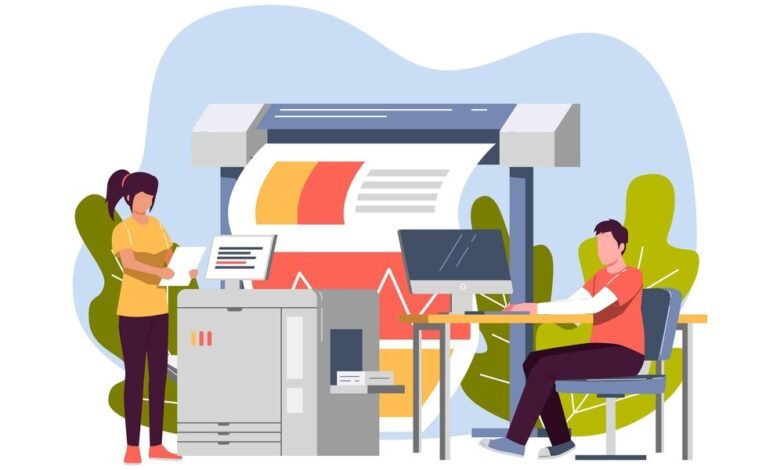Optimizing Your Business Processes: QuickBooks Check Printing Best Practices

In the realm of business finance, efficiency is paramount. QuickBooks, a popular accounting software, offers a robust suite of tools to streamline various financial tasks, including check printing. However, mastering the art of QuickBooks check printing requires more than just hitting the print button.
In this guide, we’ll walk you through the step-by-step process of QuickBooks check printing, and Benefits that ensure accuracy, efficiency, and professionalism in your financial transactions.
Benefits Of QuickBooks Check Printing
Here, we explore the benefits of QuickBooks check printing and how it enhances your financial operations:
Time Savings:
One of the most significant benefits of QuickBooks check printing is the time saved. Traditional manual check writing involves numerous steps, from handwriting checks to reconciling transactions. QuickBooks automates this process, allowing you to generate and print checks with just a few clicks. This time-saving feature enables you to focus on core business activities rather than administrative tasks.
Accuracy and Consistency:
QuickBooks ensures accuracy and consistency in check printing. By digitizing the process, QuickBooks check printing minimizes human errors associated with manual check writing, such as illegible handwriting or incorrect amounts. Additionally, QuickBooks maintains a centralized database of vendor information, ensuring that payee details are consistent across all transactions, thus reducing discrepancies and potential payment errors.
Professional Appearance:
Impress clients, vendors, and stakeholders with professionally printed checks. QuickBooks offers customizable check templates that allow you to incorporate your company logo, customize fonts, and add relevant details such as payment terms and remittance information. These personalized checks project a professional image of your business and enhance brand identity.
Enhanced Security:
Security is paramount in financial transactions, and QuickBooks check printing offers robust security features to safeguard your business’s financial integrity. From password protection to user permissions, QuickBooks ensures that only authorized personnel can access and process check printing functions. Additionally, QuickBooks checks can include security features like watermarks and microprinting to deter fraud and unauthorized alterations.
Streamlined Record-Keeping:
QuickBooks seamlessly integrates check printing with its accounting system, streamlining record-keeping processes. Each printed check is automatically recorded in QuickBooks, updating your financial ledger in real-time. This integration eliminates the need for manual data entry, reducing errors and ensuring that your financial records are accurate and up-to-date.
Cost Efficiency:
Adopting QuickBooks for check printing can lead to cost savings for your business. By eliminating the need for pre-printed check stock and manual check writing supplies, QuickBooks reduces operational expenses associated with check processing. Moreover, QuickBooks’ efficient check printing process minimizes the risk of check-related errors and potential financial losses, further contributing to cost efficiency.
Improved Cash Flow Management:
QuickBooks check printing facilitates better cash flow management by expediting payment processing. With QuickBooks, you can schedule recurring payments, track payment due dates, and monitor cash outflows effectively. By optimizing payment workflows and reducing processing times, QuickBooks helps you maintain healthy cash flow and meet financial obligations promptly.
Step-by-step process of QuickBooks check printing
QuickBooks simplifies financial management for businesses of all sizes, offering robust features for tasks like invoicing, expense tracking, and payroll. One critical aspect of financial operations is check printing, which QuickBooks streamlines with its user-friendly interface and customizable options.
In this guide, we’ll walk you through the step-by-step process of QuickBooks check printing, ensuring accuracy, efficiency, and professionalism in your financial transactions.
Set Up Your Company Information:
Begin by entering your company’s information accurately into QuickBooks. This includes your business name, address, contact details, and banking information. Ensuring the correctness of this data is crucial for proper check printing and compliance with legal requirements.
Add Vendor Information:
Input the details of vendors or payees to whom you’ll be issuing checks. Include their names, addresses, and payment terms. QuickBooks allows you to save vendor information for future transactions, streamlining the process of check writing.
Create a Bank Account:
Set up your bank account(s) within QuickBooks. Enter the account number, routing number, and other pertinent details. This step ensures that QuickBooks can accurately track your financial transactions and reconcile them with your bank statements.
Customize Check Settings:
Navigate to the check printing settings in QuickBooks and customize them according to your preferences. You can select check styles, adjust printing alignment, and add your company logo or custom fields to the checks. These customization options help create professional-looking checks that reflect your brand identity.
Enter Transaction Details:
Before printing a check, ensure that you’ve entered the transaction details accurately into QuickBooks. Specify the payee, payment amount, account allocation, and any memos or references. Double-check these details to prevent errors and discrepancies.
Select Checks for Printing:
Once transaction details are entered, select the checks you want to print. QuickBooks allows you to print individual checks or batch print multiple checks simultaneously, saving time and effort for bulk transactions.
Preview and Review:
Before finalizing the printing process, review the check details in QuickBooks’ preview mode. Verify the payee information, payment amount, and any other relevant details. This step ensures accuracy and minimizes the risk of issuing incorrect payments.
Print Checks:
After reviewing the check details, proceed to print the checks from QuickBooks. Ensure that your printer is properly configured and loaded with check stock. QuickBooks guides you through the printing process, allowing you to print checks efficiently and securely.
Record Transaction:
Once the checks are printed, record the transaction in QuickBooks to update your financial records. This step ensures that your accounting books accurately reflect the outgoing payment and maintain financial transparency.
Reconcile Bank Accounts:
Periodically reconcile your bank accounts in QuickBooks to match your recorded transactions with your bank statements. This process helps identify discrepancies and ensures the accuracy of your financial records.
Conclusion
Effective check printing in QuickBooks is more than just a routine task—it’s an essential component of efficient business processes. By following these best practices, you can optimize your workflow, enhance financial accuracy, and bolster security. From meticulous record-keeping to leveraging automation, mastering QuickBooks check printing empowers you to take control of your finances and drive business success.



